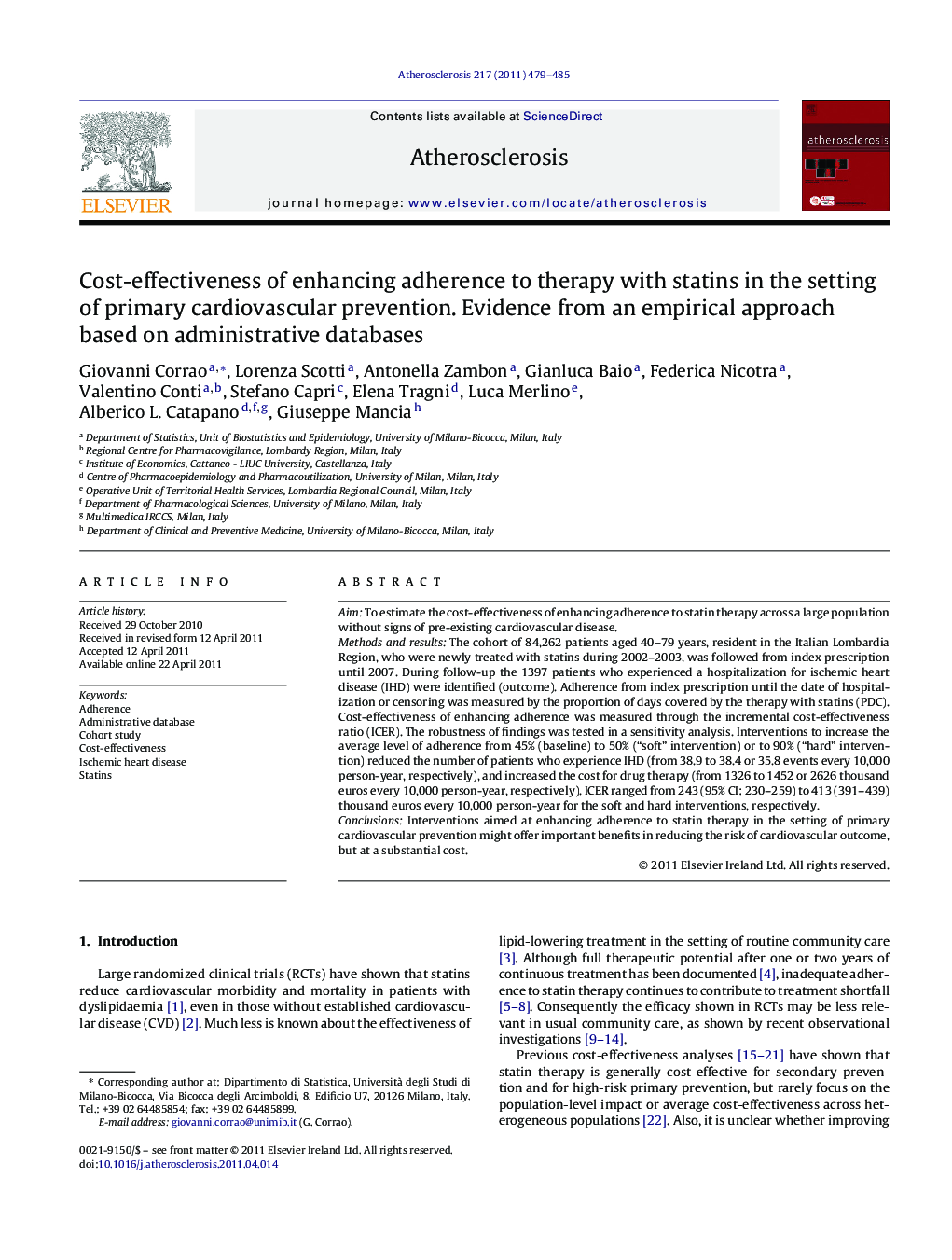| Article ID | Journal | Published Year | Pages | File Type |
|---|---|---|---|---|
| 2892801 | Atherosclerosis | 2011 | 7 Pages |
AimTo estimate the cost-effectiveness of enhancing adherence to statin therapy across a large population without signs of pre-existing cardiovascular disease.Methods and resultsThe cohort of 84,262 patients aged 40–79 years, resident in the Italian Lombardia Region, who were newly treated with statins during 2002–2003, was followed from index prescription until 2007. During follow-up the 1397 patients who experienced a hospitalization for ischemic heart disease (IHD) were identified (outcome). Adherence from index prescription until the date of hospitalization or censoring was measured by the proportion of days covered by the therapy with statins (PDC). Cost-effectiveness of enhancing adherence was measured through the incremental cost-effectiveness ratio (ICER). The robustness of findings was tested in a sensitivity analysis. Interventions to increase the average level of adherence from 45% (baseline) to 50% (“soft” intervention) or to 90% (“hard” intervention) reduced the number of patients who experience IHD (from 38.9 to 38.4 or 35.8 events every 10,000 person-year, respectively), and increased the cost for drug therapy (from 1326 to 1452 or 2626 thousand euros every 10,000 person-year, respectively). ICER ranged from 243 (95% CI: 230–259) to 413 (391–439) thousand euros every 10,000 person-year for the soft and hard interventions, respectively.ConclusionsInterventions aimed at enhancing adherence to statin therapy in the setting of primary cardiovascular prevention might offer important benefits in reducing the risk of cardiovascular outcome, but at a substantial cost.
